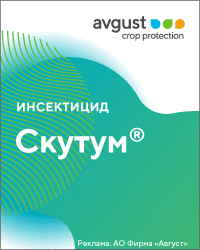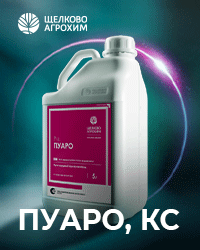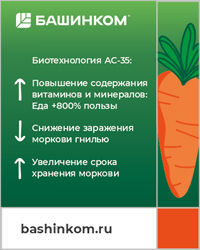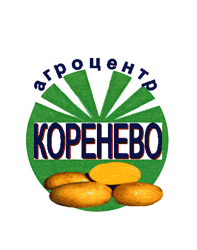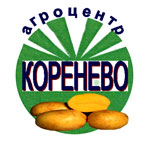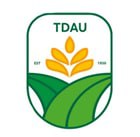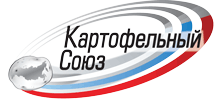UDC 635.63:631.526.32
https://doi.org/10.25630/PAV.2025.83.77.005
Chistyakova L.A., Egorova A.A., Baklanova O.V., Khovrin A.N.
The article presents the results of research on the selection of the optimal concentration of sodium chloride solution (NaCl) for the evaluation of the source material and the search for genetic sources of resistance to salinity for cucumber breeding (Cucumis sativus L.). The research was conducted at ARRIVG, a branch of the Federal State Budgetary Scientific and Scientific Institution of the Russian Federation and Poisk Agrofirm LLC (Russian Federation, Moscow Region, Ramenskiy district, Vereya village) during 2021-2023. The laboratory experiment was carried out in two versions: with dry and sprouted cucumber seeds. Based on an analysis of the effect of the concentration of sodium chloride solutions (NaCl) (50, 100, 150, 200, 250, 300 mmol/l) has an inhibitory effect on cucumber seedlings (a decrease in the number of germinated seeds in a solution of sodium chloride (NaCl), a decrease in the length of the root and the average weight of one seedling). The optimal concentration of 200 mmol/l sodium chloride (NaCl) solution was determined to assess the development of cucumber seedlings. The effectiveness of using this selection material assessment method has been proven. A strong negative inverse effect of sodium chloride (NaCl) solution concentration on cucumber seed germination, rootlet length, and average sprout weight (r> –0,80) was revealed. Strong positive direct relationships were found between the number of germinated seeds in sodium chloride (NaCl) solution and rootlet length (r> 0,70); average sprout weight and rootlet length (r> 0,90); average sprout weight (sprouted seeds) and average sprout weight (dry seeds) (r> 0,90); rootlet length (sprouted seeds) and rootlet length (dry seeds) (r> 0,90).
Key words: cucumber, NaCl, soil salinity, salt tolerance, seedlings, germination, germination energy, seed germination.
Chistyakova L.A., Cand. Sci. (Agr.), senior researcher of breeding of cucurbitaceous crops laboratory, ARRIVG – branch of the Federal State Budgetary Scientific Institution of Federal Scientific Vegetable Center (ARRIVG – branch of FSBSI FSCVG), breeder of Poisk Agrofirm. E-mail: lyubov.chistyakova.83@mail.ru
Egorova A.A., Cand. Sci. (Agr.), senior researcher of breeding of cucurbitaceous crops laboratory, ARRIVG – branch of FSBSI FSCVG, E-mail: egorova.ana@mail.ru
Baklanova O.V., Cand. Sci. (Agr.), leading researcher of breeding of cucurbitaceous crops laboratory, ARRIVG – branch of FSBSI FSCVG, breeder of Poisk Agrofirm. E-mail: baklanova@semenasad.ru
Khovrin A.N., Cand. Sci. (Agr.), associate professor, head of department of breeding and seed growing, ARRIVG – branch of FSBSI FSCVG, head of department of breeding and primary seed production of Poisk Agrofirm. E-mail: hovrin@poiskseeds.ru
- Kalinina N.V. et al. Cartographic analysis of the distribution of saline soils in russia depending on some climatic parameters. Soil Science. 2016. No. 11. Pp. 1287–1304.
- Pankova E.I. et al. Saline soils of Russia. Moscow. IKC Academkniga. 2006. 854 p.
- Litalien A., Zeeb B. Curing the earth: A review of anthropogenic soil salinization and plant-based strategies for sustainable mitigationю Science of the Total Environment. 2020. Vol. 698. P. 134235.
- Rengasamy P. Soil processes affecting crop production in salt-affected soils. Functional Plant Biology. 2010. Vol. 37. No. 7. Pp. 613–620.
- Chistyakova L.A., Timoshenko I.V., Khovrin A.N. Cucumber: assessment of salt tolerance. Potato and vegetables. 2015. No5. P. 39–40.
- Van Zelm E., Zhang Y., Testerink C. Salt tolerance mechanisms of plants. Annual review of plant biology. 2020. Vol. 71. Pp. 403–433.
- Identification of QTLs Controlling Salt Tolerance in Cucumber (Cucumis sativus L.) Seedlings. D. Liu, S. Dong, K. Bo, H. Miao, C. Li, Y. Zhang, S. Zhang, X. Gu. Plants. 2021. 10(1). 85. https://doi.org/10.3390/ plants10010085
- Egorova A.A., Chistyakova L.A., Khovrin A.N. Rapid assessment of Cucumis sativus L. for resistance to salinity. Abstracts of reports of the international scientific conference “Problems of breeding –2022”. Moscow. 2022. P. 133.
- Determination of salt tolerance of vegetable crops by seed germination in saline solutions: (Methodological guidelines) VASHNIL. Vavilov All-Russian Research Institute of Plant Growing. [Compiled by V.N. Sinelnikova et al.]. 15 p.
- Diagnostics of plant resistance to stress effects: Methodological recommendations. Ed. Udovenko G.V. Leningrad. 1988. 228 p.
For citing: Selection of the optimal concentration of sodium chloride (NaCl) solution for rapid assessment of cucumber (Cucumis sativus L.) for salinity resistance. L.A. Chistyakova, A.A. Egorova, O.V. Baklanova, A.N. Khovrin. Potato and vegetables. 2025. No5. Pp. 55-60. https://doi.org/10.25630/PAV.2025.83.77.005 (In Russ.).

